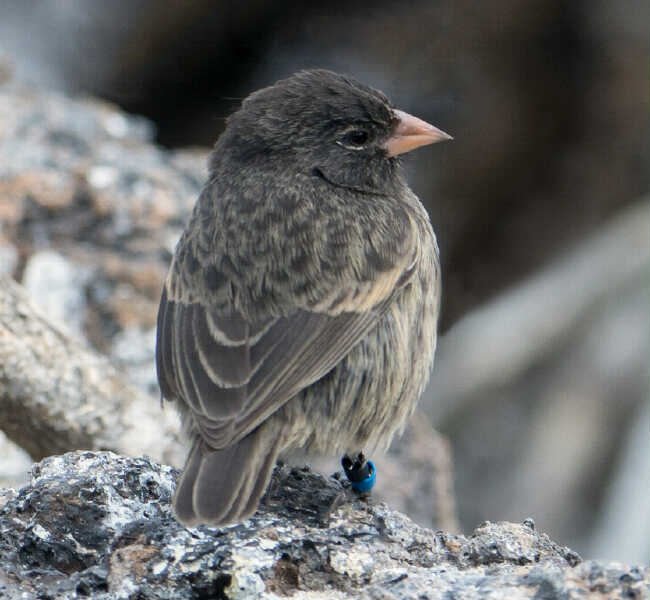|
|
|
|
|
|
|
|
|
|
|
[HBW - BirdLife (v3)] |
26/04/2024 07:34:27 PM |
|
|
| |
| Species Details [Taxonomy: HBW - BirdLife (v3)] |
|
|
| LC |
|
Sharp-beaked Ground-finch* |
Id (Atlas): |
|
| |
|
Geospiza difficilis |
|
Description (10)

|
Sharp-beaked Ground-finch
© susanfleck.com
|
|
|
|
Other Names (World)
Sharp-beaked Ground-Finch, Vampire Finch (septentrionalis), Sharp-beaked Ground Finch
Family
Thraupidae (Tanagers)
Size
12.50 cm
First Described (Guide)
Sharpe, 1888
Habitat
Subtropical and tropical dry shrubland. Also, subtropical and tropical dry forest. From sea-level - 1,000 m.
Ecuador.
|
Galápagos Islands of Ecuador.
|
| |
Rarity Status
Currently this species is not classified as a rarity in this country OR information has not been updated.
Population
Estimated population is unknown (2010).
Status LC
For more information see BirdLife International Species Factsheet.
Subspecies
Recent molecular-genetic research suggests that the Galapagos group consisting of present genus and Certhidea, Platyspiza and Camarhynchus, known collectively as "Darwin's finches", is allied to the tanagers (Thraupidae), being closest to Coereba, Tiaris and several Caribbean genera. A form Geospiza nebulosa was described in 1837 from two specimens, one from Floreana (Charles); relationships uncertain, but, if this is conspecific with present species, name nebulosa would have priority; nebulosa has been considered a synonym of Medium Ground-finch (Geospiza fortis). Relationship of present species to other members of genus has always been troubled (hence the name difficilis). Hybridizes occasionally with Espanola Cactus-finch (Geospiza conirostris). Considerable differences exist in habits, ecology, size, and bill shape among its different populations. Recent genetic work suggests that interior island populations, which are restricted to highlands on Pinta, Fernandina (Narborough) and Santiago (James), form a well-supported clade which may be only distantly related to others in genus, although, from current data, exact relationship not clear. Present species may warrant division into more than one species, e.g. has been suggested that subspecies septentrionalis merits elevation to species rank. Also, Genovesa population, currently included in nominate, appears genetically distantly related to Pinta population, and it may be better to resurrect name acutirostris for it. Indeed, Genovesa population seems genetically closer to other members of genus, suggesting that it should be removed altogether from present species. A full review is required.
The following 3 subspecies are recognised:
- septentrionalis Sharpe, 1888 - Darwin (Culpepper) and Wolf (Wenman), in extreme north-western Galapagos Is. Considered by some authors to be a distinct species, Vampire Ground-finch (Geospiza septentrionalis).
- difficilis Sharpe, 1888 - Pinta and Genovesa (Tower), in northern Galapagos Is.
- debilirostris Ridgway, 1894 - Fernandina (Narborough), Isabela (Albemarle), Santiago (James) and Santa Cruz (Indefatigable), in western and central Galapagos Is.
References
See References.
Files:

BirdLife International
For more information about the Sharp-beaked Ground-finch see...  BirdLife International Species Factsheet. BirdLife International Species Factsheet.
Articles about the Sharp-beaked Ground-finch
If you would like to read any articles about the Sharp-beaked Ground-finch...  Show Articles (0) Show Articles (0)
No Pictures of Sharp-beaked Ground-finch
If Birdpedia has no pictures of Sharp-beaked Ground-finch or you would like to see more, then try the following...
 From BING (10) From BING (10)
No Videos of Sharp-beaked Ground-finch
If Birdpedia has no videos of Sharp-beaked Ground-finch or you would like to see more, then try the following..
 From BING (0) From BING (0)
|
|
|
|